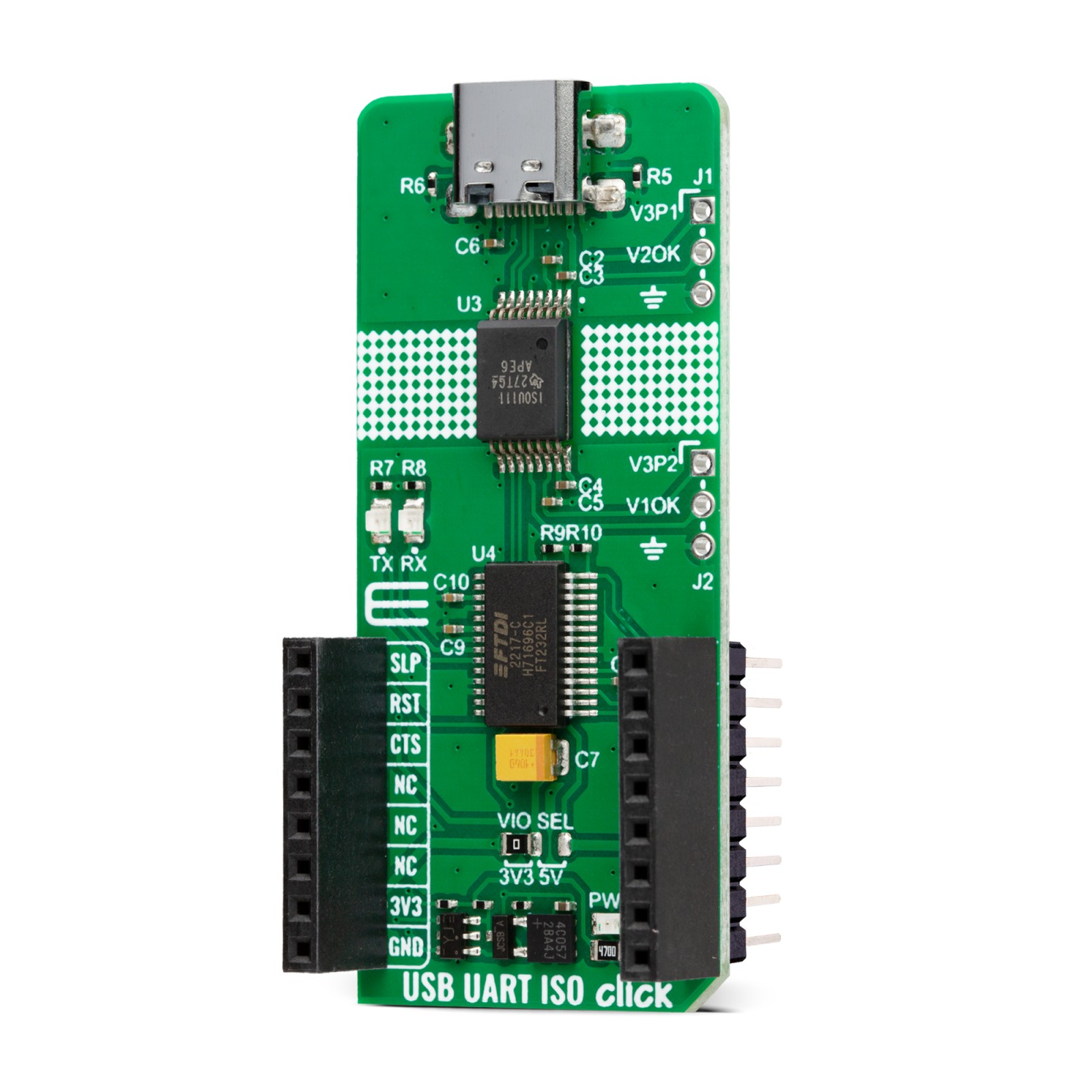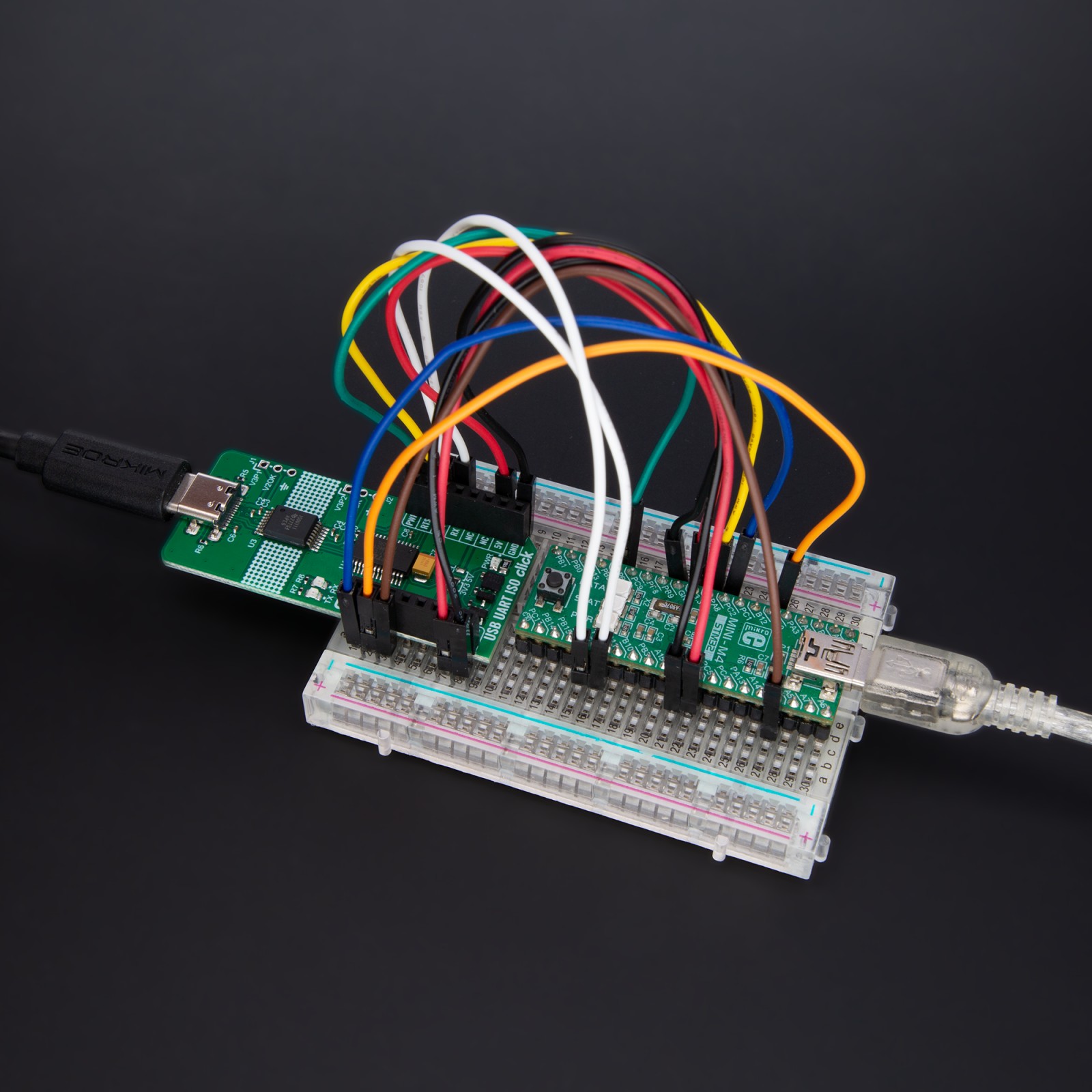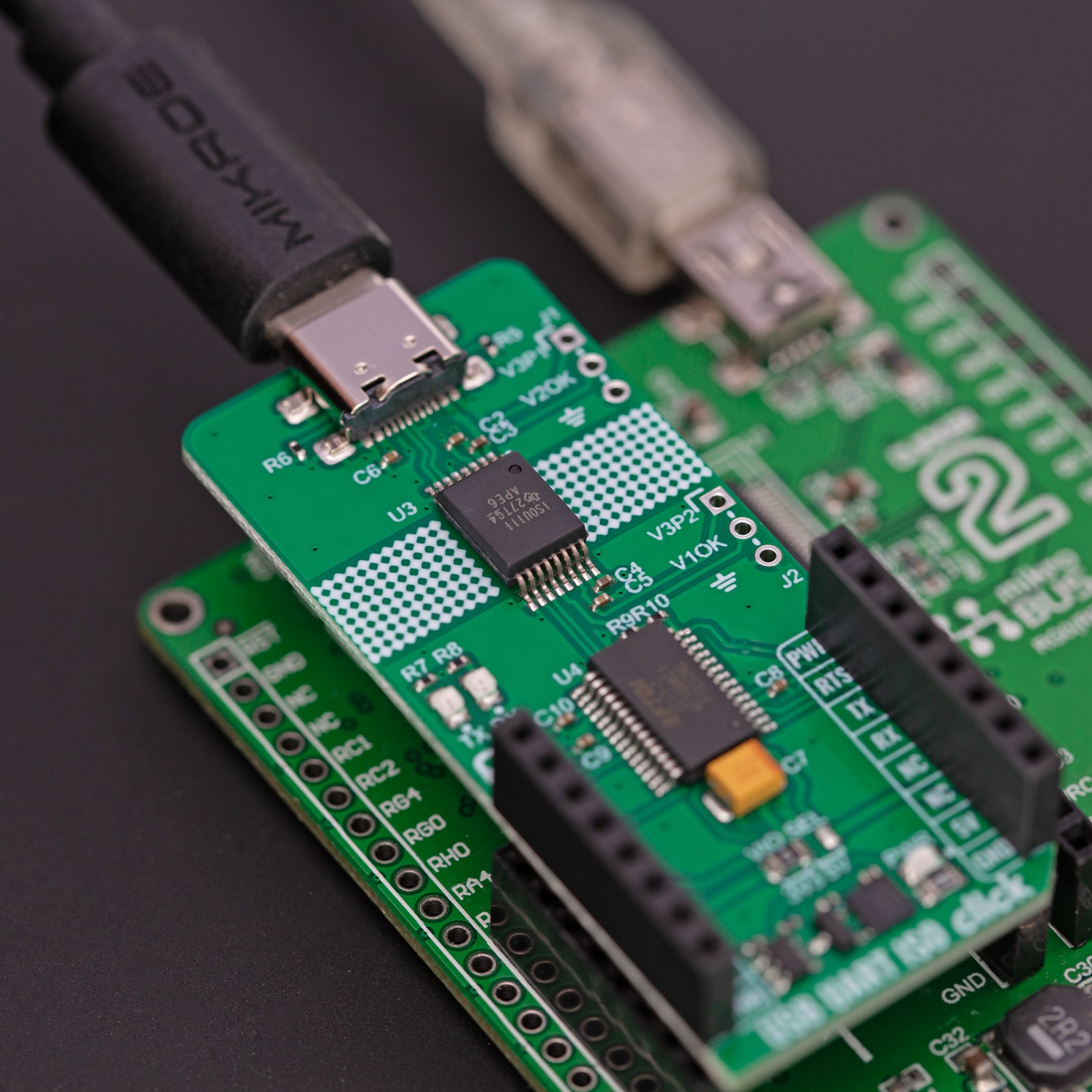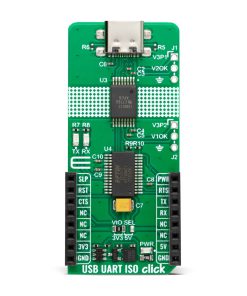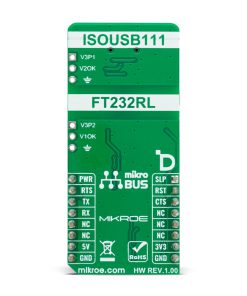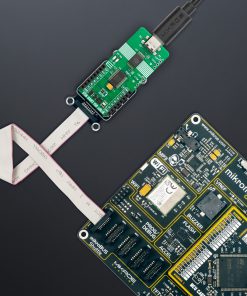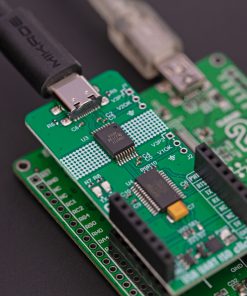USB UART ISO Click
R970.00 ex. VAT
USB UART ISO Click is a compact add-on board that offers a completely isolated differential pair of lines of the USB physical interface. This board features the ISOUSB111, a full/low-speed isolated USB repeater from Texas Instruments. It is a USB 2.0-compliant device that supports low-speed (1.5Mbps) and full-speed (12Mbps) signaling, USB On-The-Go (OtG), and Type-C Dual Role Port (DRP). In addition, this Click board™ comes with the FT232R, a USB UART IC from FTDI, making it a complete USB-to-UART isolated solution. This Click board™ makes the perfect solution for the development of USB hub, host, peripheral, and cable isolation applications.
USB UART ISO Click is fully compatible with the mikroBUS™ socket and can be used on any host system supporting the mikroBUS™ standard. It comes with the mikroSDK open-source libraries, offering unparalleled flexibility for evaluation and customization. What sets this Click board™ apart is the groundbreaking ClickID feature, enabling your host system to seamlessly and automatically detect and identify this add-on board.
Stock: Lead-time applicable.
| 5+ | R921.50 |
| 10+ | R873.00 |
| 15+ | R824.50 |
| 20+ | R793.46 |


